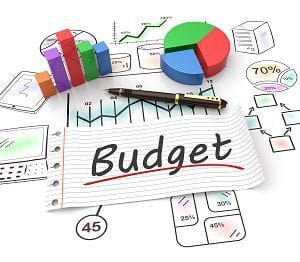Building an Emergency Fund: A Step-by-Step Guide to Financial Security on a Modest Income
Building an emergency fund is an essential step toward achieving financial independence and long-term security.

Key Takeaways
- An emergency fund is a critical component of financial stability, providing a safety net for unexpected expenses.
- Start small and set realistic savings goals based on your current financial situation.
- Creating and sticking to a budget is crucial for building your emergency fund.
- Utilize various saving strategies, including automatic transfers and cutting unnecessary expenses.
- Consider using paycheque advances as a tool to manage cash flow without dipping into your savings.
- Regularly review and adjust your saving strategies as your financial situation changes.
Introduction to Emergency Funds
In today's unpredictable economic climate, establishing an emergency fund is crucial for achieving financial stability. An emergency fund acts as a financial cushion, offering peace of mind and security against unexpected expenses, such as medical emergencies, car repairs, or sudden job losses. Without an emergency fund, many individuals find themselves relying on high-interest credit cards or loans, which can lead to a cycle of debt. According to a 2023 report by the Financial Consumer Agency of Canada, nearly 50% of Canadians are just $200 away from financial insolvency.
This statistic underscores the critical importance of having readily available savings. This guide is designed to help you grasp the significance of an emergency fund and provides practical, step-by-step strategies for building and maintaining one, even on a modest income. By the end of this guide, you'll be equipped with the knowledge and tools needed to create a robust financial safety net that can help navigate life's unexpected challenges.
Why an Emergency Fund is Essential
An emergency fund is a cornerstone of financial stability, providing a buffer against life's unpredictable challenges. According to a 2023 survey by the Financial Consumer Agency of Canada, 54% of Canadians indicated they would struggle to cover an unexpected $500 expense. This statistic highlights the vulnerability many face without a financial safety net. An emergency fund helps mitigate the risk of debt accumulation, which often occurs when individuals rely on high-interest credit cards or loans to manage unforeseen expenses.
By establishing a dedicated fund, you not only secure your immediate financial needs but also protect your long-term financial health. This reserve enables you to maintain your lifestyle and financial commitments without interruption, reducing stress and anxiety during difficult times. Moreover, an emergency fund allows you to make better financial decisions, as you're not forced into hasty or detrimental choices due to a lack of resources.
In addition to safeguarding against debt, having an emergency fund can also prevent the need to liquidate investments or assets, which could otherwise disrupt your financial growth strategy. Ultimately, an emergency fund is not just a financial tool; it's a path to achieving peace of mind and resilience, empowering you to handle unexpected financial setbacks with confidence and security.

Assessing Your Financial Situation
Before embarking on the journey to build an emergency fund, it's essential to thoroughly assess your current financial situation. This foundational step involves a comprehensive review of your income, expenses, and any existing debts to gain a clear understanding of your financial landscape. Start by listing all sources of income, including salary, freelance work, and any passive earnings. Next, detail your monthly expenses, categorizing them into fixed costs (like rent, utilities, and loan payments) and variable expenses (such as groceries, dining out, and entertainment).
Understanding your financial situation is crucial in determining how much you can realistically save each month. To facilitate this process, consider using financial tools or apps such as Mint, YNAB (You Need A Budget), or PocketGuard. These tools can help track your spending habits and provide insights into your financial behavior. By analyzing your spending patterns, you'll be able to identify areas where you can cut costs and reallocate funds towards your emergency savings.
For instance, reducing discretionary spending or cancelling unused subscriptions can free up extra cash for savings. By gaining a clear picture of your financial status, you're better equipped to set achievable savings goals and make informed decisions that support the growth of your emergency fund.
Setting Realistic Goals for Your Emergency Fund
Setting realistic and achievable goals is a crucial step in building an effective emergency fund. Financial experts typically recommend having three to six months' worth of living expenses saved to cover unforeseen circumstances like job loss or medical emergencies. However, this goal can seem daunting, especially if you're starting from scratch. It's often more practical to begin with smaller, more attainable targets, such as saving $500 or $1,000. Achieving these initial milestones can provide the motivation and momentum needed to continue building your savings.
Starting small allows you to develop the habit of saving regularly, making it easier to gradually increase your goals over time. Once you've reached your initial target, reassess your financial situation and aim for a larger reserve. Consider factors such as your job stability, family size, and any potential financial obligations that may arise. By incrementally increasing your savings goal, you can better prepare for larger emergencies without feeling overwhelmed.
Breaking down your ultimate objective into manageable steps not only boosts your confidence but also helps you stay committed to your savings plan. As you consistently meet your goals, you'll build a robust emergency fund that provides financial security and peace of mind, allowing you to handle life's unexpected challenges with greater ease.

Creating a Budget to Support Savings
A well-structured budget is fundamental for effective money management and for achieving your savings goals, such as building an emergency fund. To create a robust budget, start by listing all sources of income, including primary salaries, side gigs, and any passive income streams. Next, outline your fixed monthly expenses, which typically include rent or mortgage payments, utilities, insurance, and any recurring debt payments. This gives you a clear picture of your essential financial commitments.
After accounting for fixed expenses, examine your discretionary spending areas like dining out, entertainment, and shopping. These are the areas where you can make adjustments to free up additional funds for savings. By consciously reducing unnecessary spending, you can redirect these funds towards building your emergency fund.
To effectively allocate your income, consider using the 50/30/20 rule as a guideline:
- 50% to Necessities: Dedicate half of your income to essential expenses such as rent, groceries, utilities, and transportation.
- 30% to Discretionary Wants: Allocate 30% of your income to non-essential spending, including dining out, entertainment, and hobbies.
- 20% to Savings and Debt Repayment: Use this portion to build your financial future and pay down debt.
Within the savings portion, prioritize building your emergency fund:
- Automate Your Savings: Set up automatic transfers to direct a portion of your income into your emergency fund consistently. This ensures you save before you have the chance to spend it, helping you build a financial safety net effortlessly.
By adhering to a structured budget and making conscious spending decisions, you can systematically grow your emergency fund. This disciplined approach not only supports your immediate savings goals but also lays the foundation for long-term financial security and resilience against unexpected financial challenges.
Strategies to Start Your Emergency Fund
Building an emergency fund requires discipline, strategic planning, and a commitment to consistent saving. By implementing the following strategies, you can effectively kickstart your emergency fund:
Automate Savings:
One of the most effective ways to build your emergency fund is to automate your savings. Set up automatic transfers from your checking account to your savings account each payday. This ensures that a portion of your income is saved consistently without requiring manual intervention. By treating your savings like a non-negotiable expense, you’re more likely to build a substantial fund over time.
Cut Unnecessary Expenses:
Take a close look at your spending habits to identify non-essential expenses that can be reduced or eliminated. This might include cutting back on dining out, cancelling unused subscription services, or opting for more economical entertainment options. By reallocating these funds to your emergency savings, you can accelerate the growth of your fund without significantly impacting your lifestyle.
Increase Income:
Supplementing your income is another effective strategy for boosting your emergency fund. Consider opportunities for part-time work, freelancing, or monetizing a hobby. Additionally, selling unused items around your home can provide an immediate influx of cash. Use these additional earnings to bolster your savings, ensuring that every extra dollar moves you closer to your financial goal.
Save Windfalls:
Whenever you receive unexpected financial gains, such as tax refunds, bonuses, or monetary gifts, deposit them directly into your emergency fund. These windfalls can significantly boost your savings without affecting your regular budget. By resisting the temptation to spend this extra money, you can make substantial progress toward your savings target.
By employing these strategies, you can effectively start and grow your emergency fund. Consistent effort and mindful financial decisions will not only enhance your financial security but also provide peace of mind, knowing you're prepared for life’s unexpected challenges.

Growing Your Emergency Fund Over Time
After establishing your emergency fund, the next step is to focus on its growth to ensure continued financial security. Begin by regularly reviewing your budget to identify opportunities for increasing your savings contributions. As your income rises or your expenses decrease, allocate a portion of these changes towards your emergency fund. This proactive approach ensures that your emergency savings grow in tandem with your financial situation.
Consider placing your emergency fund in a high-yield savings account. These accounts typically offer higher interest rates compared to standard savings accounts, allowing your funds to grow passively over time. The interest earned can significantly boost your savings without requiring additional contributions from your income.
Periodically reassess your financial goals to ensure they remain aligned with any changes in your life circumstances. Significant events such as acquiring a new job, starting a family, or purchasing a home may necessitate adjustments to your emergency fund target. By revisiting your goals, you ensure that your emergency fund remains adequate to cover potential needs, providing a robust safety net for unforeseen expenses.
Moreover, consider setting incremental savings targets beyond your initial goal. This not only keeps you motivated but also enhances your financial resilience. Consistently applying these strategies will help your emergency fund grow steadily, offering you enhanced peace of mind and the security to navigate life's unexpected financial challenges with confidence.
Maintaining and Using Your Emergency Fund Wisely
Maintaining discipline is crucial to ensuring that your emergency fund remains a reliable financial safety net. The primary purpose of an emergency fund is to cover unexpected and urgent expenses, such as medical emergencies, car repairs, or sudden job loss. It's important to resist the temptation to dip into these savings for non-essential purchases or lifestyle upgrades.
If you find yourself in a situation where you need to use your emergency fund, make replenishing it a top priority. Begin by adjusting your budget to allocate more funds toward rebuilding your savings. This might involve temporarily cutting back on discretionary spending or finding additional income streams to expedite the replenishment process. The faster you restore your emergency fund, the sooner you'll regain a solid financial cushion for future emergencies.
Consistent monitoring of your financial situation is also key to maintaining a healthy emergency fund. Regularly review your budget and savings goals to ensure they align with any changes in your financial circumstances. Adjust your contributions as necessary to keep your emergency fund growing and responsive to your needs.
By maintaining discipline and staying committed to your savings plan, you can ensure that your emergency fund remains intact and ready to support you through life's unexpected challenges. This prudent approach not only safeguards your financial well-being but also provides peace of mind, knowing you're prepared for whatever comes your way.

The Role of Paycheque Advances in Financial Planning
Paycheque advances can play a strategic role in your financial planning, offering a flexible solution for immediate cash flow needs without depleting your emergency savings. Companies like Swift Wellness provide paycheque advance services that allow employees to access a portion of their earned wages before the standard payday. This service can be particularly advantageous during financial pinch points, helping you manage expenses without resorting to high-interest credit or loans.
By using a paycheque advance, you can address short-term financial demands—such as unexpected car repairs or medical bills—without tapping into your emergency fund. This preserves your long-term savings for more significant, unforeseen emergencies, ensuring that your financial safety net remains intact and available when truly needed.
Moreover, paycheque advances can help avoid the financial pitfalls associated with high-interest debt, such as credit card fees or payday loans, which can quickly compound and lead to a cycle of debt. This makes them a viable option for managing immediate cash flow issues in a cost-effective manner.
However, it's important to use paycheque advances judiciously as part of a broader financial strategy. Regularly relying on advances might indicate underlying financial management issues that need to be addressed, such as budgeting or spending habits. By incorporating paycheque advances as an occasional tool rather than a frequent necessity, you can maintain a healthy financial balance, protecting both your immediate and future financial well-being. This prudent use of paycheque advances helps you manage financial strain efficiently, while preserving the integrity of your emergency fund for more critical needs
Conclusion: Securing Your Financial Future
Building an emergency fund is an essential step toward achieving financial independence and long-term security. By thoroughly understanding your financial situation, setting realistic and achievable goals, and implementing effective saving strategies, you can establish a robust financial safety net. This fund will serve as a buffer against life's unexpected expenses, safeguarding your financial well-being and providing peace of mind.
Utilizing resources such as paycheque advances can also play a vital role in maintaining your financial stability. These tools can help you manage short-term cash flow challenges without compromising your dedicated savings, ensuring your emergency fund remains intact for more significant emergencies.
As you diligently grow your emergency fund, you'll not only enhance your financial resilience but also prepare yourself for any unforeseen circumstances that may arise. This preparation allows you to face life's challenges with confidence and reduces stress associated with financial uncertainties.
By adopting these practices and maintaining financial discipline, you are on the path to a more secure and resilient financial future. This proactive approach not only protects your current financial status but also lays the groundwork for continued financial growth and stability. With a solid emergency fund and a strategic financial plan, you can navigate life's uncertainties with assurance and peace of mind.
